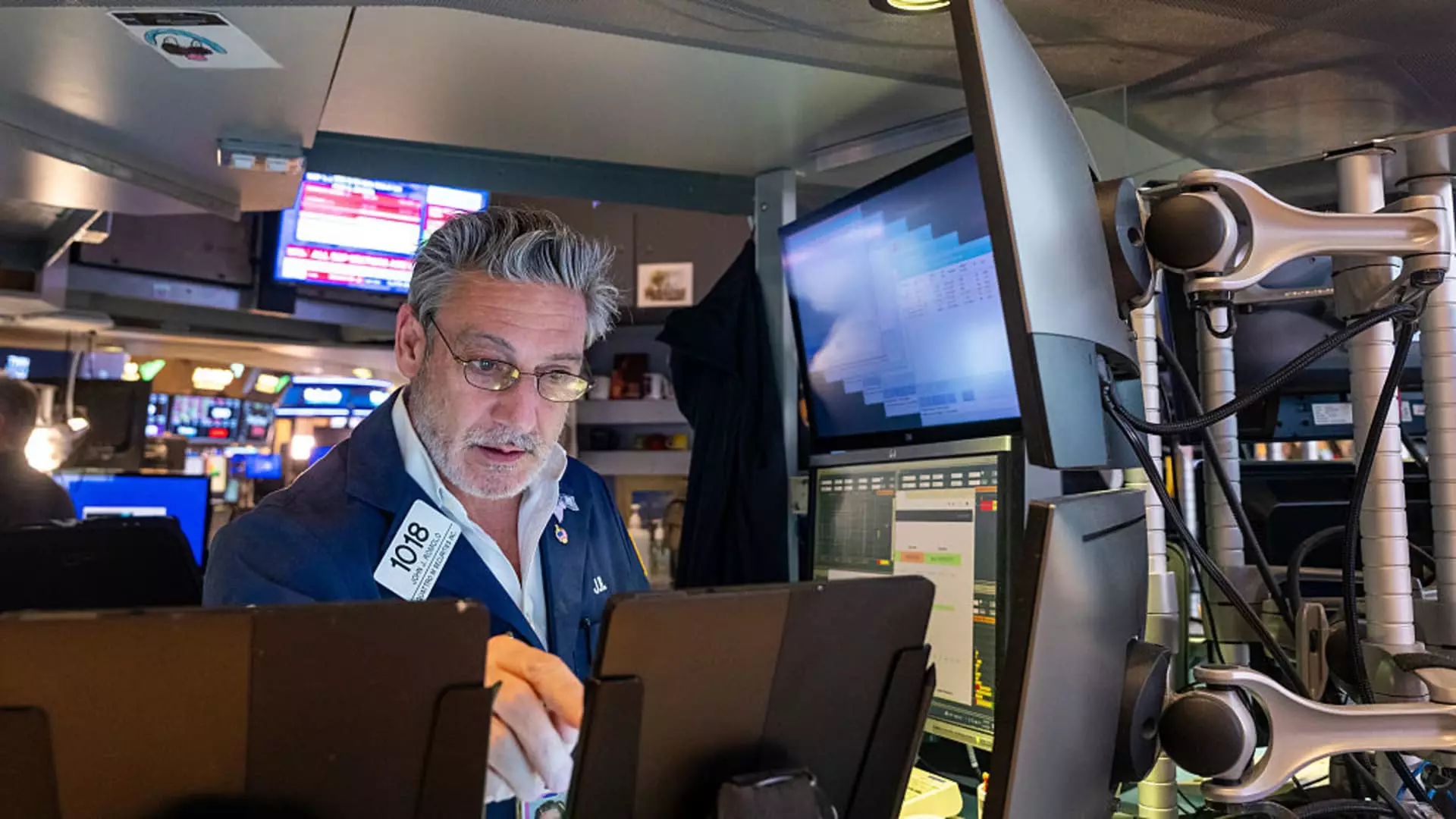In a climate where economic stability seems increasingly precarious, characterized by President Trump’s contentious trade policies, defense stocks have emerged as an unexpected beacon of resilience. The stock market has been on a roller coaster, with the S&P 500 experiencing a staggering decline of 3.5% on one day, following a prior surge of 9% when a temporary tariff reprieve was announced. This stark volatility reflects growing concern over the effects of tariffs on the broader economy, leading to a climate of uncertainty for investors. Yet, amid this turmoil, select defense companies have outperformed their market counterparts, suggesting that they operate under a different set of rules—one largely insulated from the fluctuating tides of international trade dynamics.
The Power of Domestic Operations
As trade tensions escalate, it is worth examining why defense stocks show relative strength. According to Sheila Kahyaoglu, an aerospace and defense analyst at Jefferies, numerous defense companies primarily source materials and conduct operations domestically, rendering them less vulnerable to the tariffs that have plagued other sectors. This fundamental operational structure is not merely advantageous; it is a strategic pillar that shields them from the repercussions of international trade disputes. With companies like Boeing reporting that approximately 90% of their defense operations are domestic, the reality becomes clear: the defense sector has woven itself into the fabric of the American economy in a way that other industries have not. The implications of this are profound, providing a buffer that allows defense firms to remain stable, despite external economic pressures.
Political Instability Fuels Growth
Rising tension across the globe, particularly in volatile regions such as the Middle East and Pacific Rim, traditionally serves to bolster defense stocks. Investors often regard these situations as ripe opportunities for growth within the military-industrial complex. The intangible elements of geopolitical uncertainty create an environment where defense spending becomes not just predictable, but necessary. As Tony Bancroft, a portfolio manager at Gabelli Funds, succinctly points out, the specter of conflict compels nations to invest in their military capabilities, ensuring stability and resilience for defense enterprises.
Furthermore, President Trump’s ambitious proposal of a defense budget exceeding $1 trillion—a staggering increase of at least $100 billion over the current plan—truly echoes the administration’s commitment to prioritizing military spending. This signals market confidence in the sector and, consequently, creates a favorable landscape for stocks like Lockheed Martin and Northrop Grumman, which, as several analysts note, are well-aligned with these priorities.
Spotlight on Promising Companies
As the defense sector gains traction, specific companies are commanding attention due to their adeptness at navigating the evolving landscape. Huntington Ingalls Industries, for instance, saw an impressive uptick of 16% last month, attributed largely to the President’s rhetoric around revitalizing shipbuilding. In the high-stakes world of defense contracting, where perceptions can significantly influence stock performance, an administration that champions the industry can translate to financial success. Observing the intricacies of this sector reveals how often fortunes can be swayed not only by financial fundamentals but also by the prevailing political discourse.
Moreover, analysts are pointing to companies with strong alignment to Department of Defense (DoD) priorities. Northrop Grumman has been highlighted as having a portfolio that caters specifically to enduring DoD needs, setting it up for projected growth as defense spending rises. This reflects a trend where investors must look beyond traditional metrics and consider political backing and market positioning as critical determinants of success.
The Future Outlook: Warnings Against Complacency
Despite the current upbeat sentiment surrounding defense stocks, caution is necessary as we forge ahead. The political landscape remains unpredictable, and while defense spending may appear stable, there are underlying risks associated with overreliance on government contracts and budgets. Shifts in administration, budget allocations, or international agreements could all adversely impact the profitability of these firms.
Investors need to remain vigilant and adaptive, taking into account both macroeconomic conditions and global events that could turn sentiment rapidly. While defense stocks may seem like a solid bet amidst turbulence, a well-rounded approach will require acknowledgment of the multifaceted risks involved in this sector.
In a financial world that is fraught with uncertainty, understanding the dynamics at play within specific industries provides additional clarity. Defense stocks may currently be flourishing, yet their trajectory warrants close monitoring. As the saying goes, “What goes up must come down,” and in the realm of finance, the only certainty is uncertainty itself.

